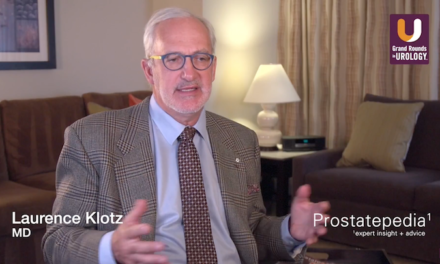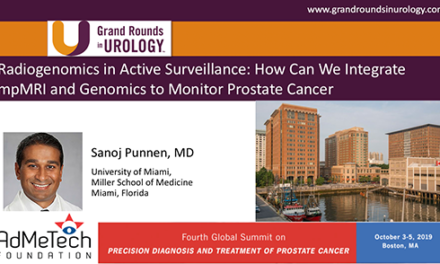Gerard Morton, MD, FRCPC, FABS, presented “Prostate High Dose-Rate (HDR) Brachytherapy as Boost and Monotherapy” as part of a course on Prostate Brachytherapy released in 2021 and created by the American Brachytherapy Society in partnership with Grand Rounds in Urology.
How to cite: Morton, Gerard. “Prostate High Dose-Rate (HDR) Brachytherapy as Boost and Monotherapy.” September 2021. Accessed May 2025. https://grandroundsinurology.com/prostate-high-dose-rate-hdr-brachytherapy-as-boost-and-monotherapy/
Prostate High Dose-Rate (HDR) Brachytherapy as Boost and Monotherapy
As part of a special course on brachytherapy for prostate cancer from the American Brachytherapy Society (ABS) and Grand Rounds in Urology, Gerard Morton, MD, FRCPC, FABS, Radiation Oncologist at the Sunnybrook Research Institute and Professor of Radiation Oncology at the University of Toronto in Toronto, Canada, discusses the differences between high-dose-rate (HDR) and low-dose-rate (LDR) brachytherapy as a boost and as monotherapy, strategies for performing HDR brachytherapy and patient selection criteria for HDR boost and monotherapy. He states that brachytherapy involves the placement of radioactive sources rising to the heart of the cancer, through a HDR or a LDR and either form of brachytherapy has significant advantages to an external beam radiation therapy such as stereotactic body radiotherapy (SBRT). Dr. Morton explains that LDR brachytherapy delivers a high level of radiation more slowly by placing permanent seeds in the prostate, while HDR is a temporary form of brachytherapy which delivers a high dose within minutes using a robotic system. He explains that when patients receive LDR brachytherapy treatment, it is commonly a monotherapy, and there is some risk of seed displacement. HDR brachytherapy is usually a boost for an external beam treatment, it can treat disease outside of the prostate, and it is easier to shape than external beam; but it can be used as a monotherapy. Next, Dr. Morton describes how to perform HDR brachytherapy, explaining that the physician must insert the catheters under transrectal ultrasound (TRUS) guidance and perform imaging with catheters in place. The physician then needs to contour the target volumes and organs at risk and determine how long the source stays at each position to deliver the dose before delivering the treatment and removing the catheters. Dr. Morton states that many physicians use real-time TRUS-based planning, because it avoids having to move the patient and potentially displace catheters, and can be completed within 60 to 90 minutes. He discusses data attesting to the efficacy of HDR boost, and that a HDR boost is primarily recommended for intermediate- or high-risk disease. Lastly, Dr. Morton breaks down the spectrum of brachytherapy and prostate cancer treatment strategies.
For more on brachytherapy, check out the first module of the free Prostate Brachytherapy course from GRU and the American Brachytherapy Society.
ABOUT THE AUTHOR
Gerard Morton, MD, FABS, is a radiation oncologist at the Sunnybrook Health Sciences Centre, and affiliate scientist of Evaluative Clinical Sciences for the Odette Cancer Research Program at Sunnybrook Research Institute. He is president of the Canadian Brachytherapy Group. Dr. Morton is also a professor of Radiation Oncology at the University of Ontario, and a board member of the Canadian Association of Research Oncology. He is on the editorial board of the Brachytherapy journal. He has made significant contributions to protocols in brachytherapy and radiotherapy for the treatment of prostate cancer, and has contributed more than 100 peer-reviewed publications, including Practical Radiation Oncology, Radiotherapy and Oncology, and the Canadian Urological Association journal . He completed his MB, BcH, and BAO from the National University of Ireland, Medicine in 1985, followed by his FRCPC in Radiation Oncology in 1994. In 1994, he began at the Odette Cancer Center at the University of Toronto as a staff Radiation Oncologist. He became an associate professor in 2011, and in 2020 became a full professor.




